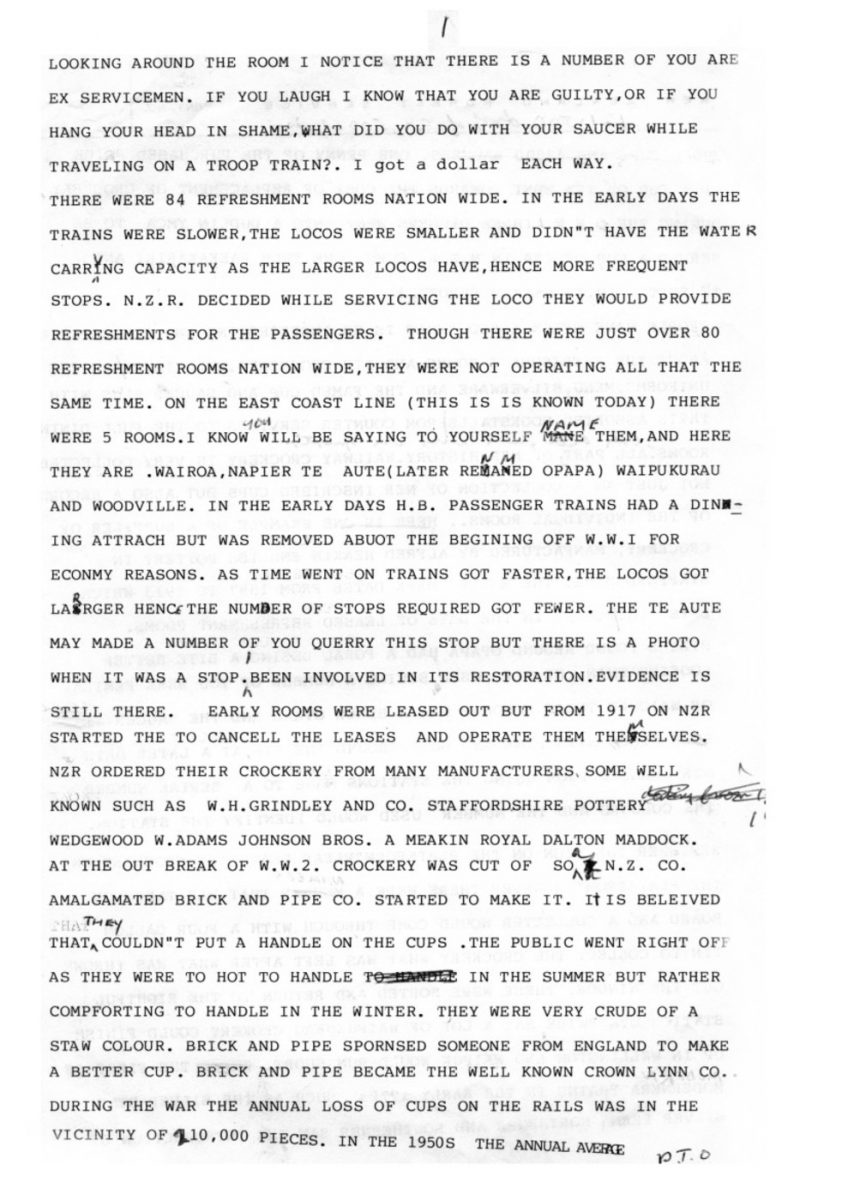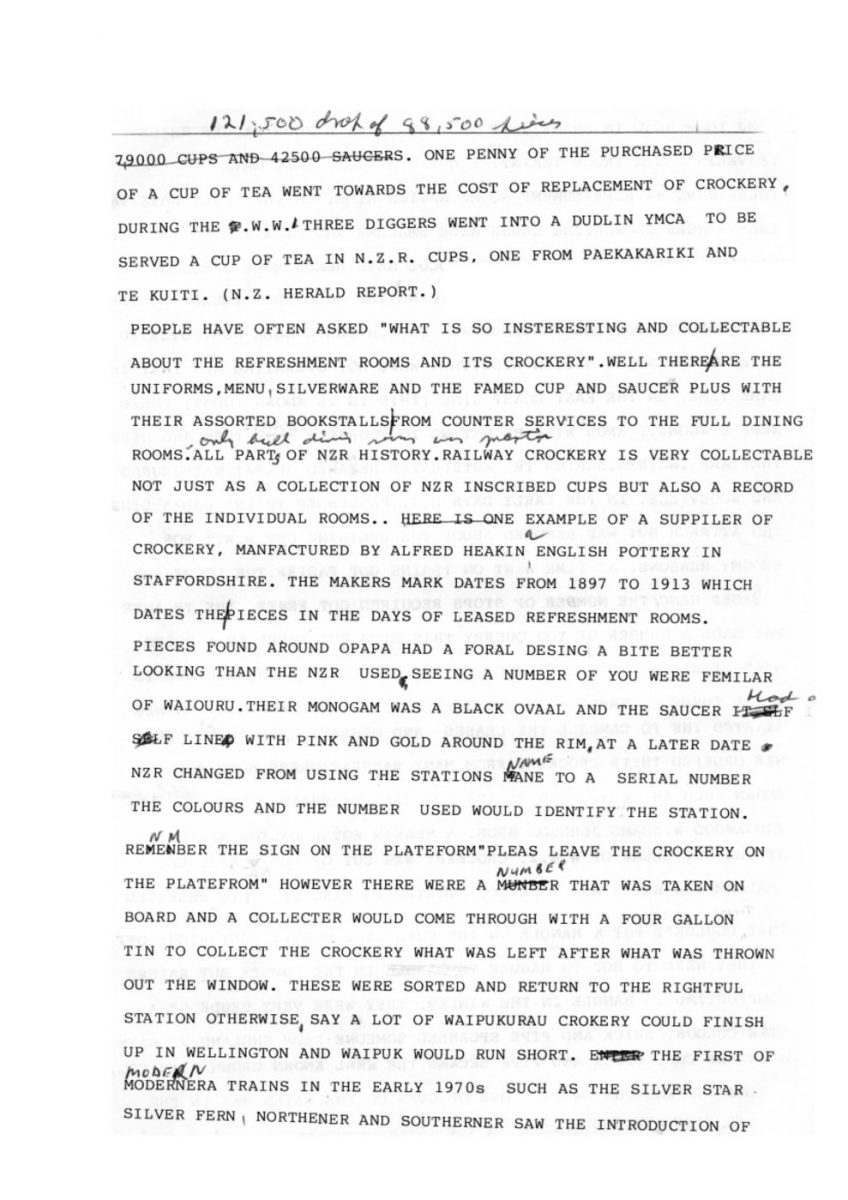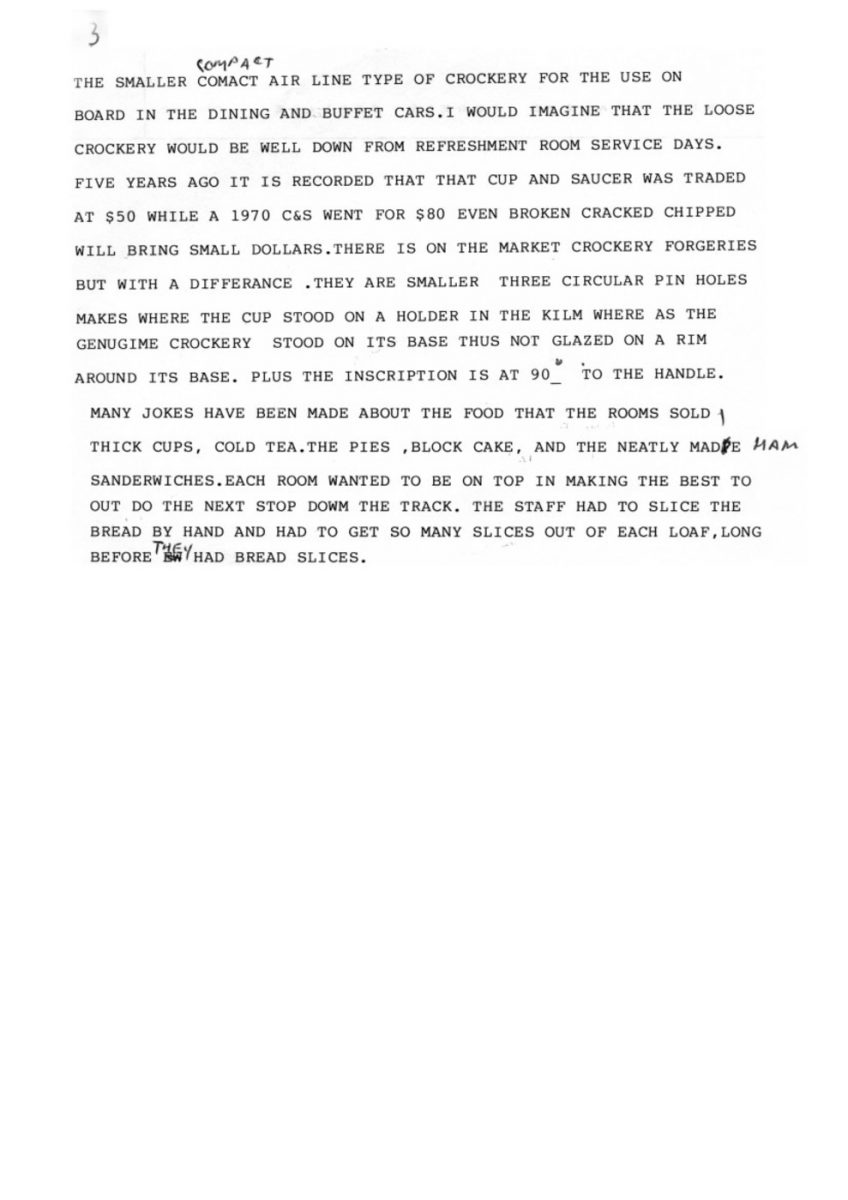Looking around the room, I notice that there is a number of you are ex-servicemen. If you laugh, I know that you are guilty, or if you hang your head in shame, what did you do with your saucer while travelling on a troop train? I got a dollar each way.
There were 84 refreshment rooms nation-wide. In the early days the trains were slower, the locos were smaller and didn’t have the water carrying capacity as the larger locos; hence more frequent stops. N.Z.R. decided while servicing the loco, they would provide refreshments for the passengers. Though there were just over 80 refreshment rooms nationwide, they were not operating all at the same time. On the east coastline (this is known today) there were 5 rooms. I know you will be saying to yourself name them, and here they are, Wairoa, Napier, Te Aute (later renamed Opapa) Waipukurau and Woodville. In the early days H.B passenger trains had dining attached but was removed about the beginning of W.W.1. for economy reasons. As time went on trains got faster, the locos got larger hence the number of stops required got fewer. The Te Aute may make a number of you query this stop, but there is a photo when it was a stop. I have been involved in its restoration; evidence is still there. Early rooms were leased out but from 1917 on, N.Z.R. started to cancel the leases and operate them themselves. N.Z.R. ordered their crockery from many manufacturers, some well known such as W.H. Grindley and Co., Staffordshire Pottery, Wedgewood, W. Adams, Johnson Bros., A. Meakin, Royal Dalton and Maddock.
At the out break of W.W.2. crockery was cut of [off] so Amalgamated Brick and Pipe Co. started to make it. It is believed that they couldn’t put a handle on the cups. The public went right off as they were to hot to handle in the summer but rather comforting to handle in the winter. They were very crude of a straw colour. Brick and Pipe sponsored someone from England to make a better cup. Brick and Pipe became the well-known Crown Lynn Co.
During the war the annual loss of cups on the rails was in the vicinity of 210,000 pieces. In the 1950s the annual average P.T.O














Do you know something about this record?
Please note we cannot verify the accuracy of any information posted by the community.